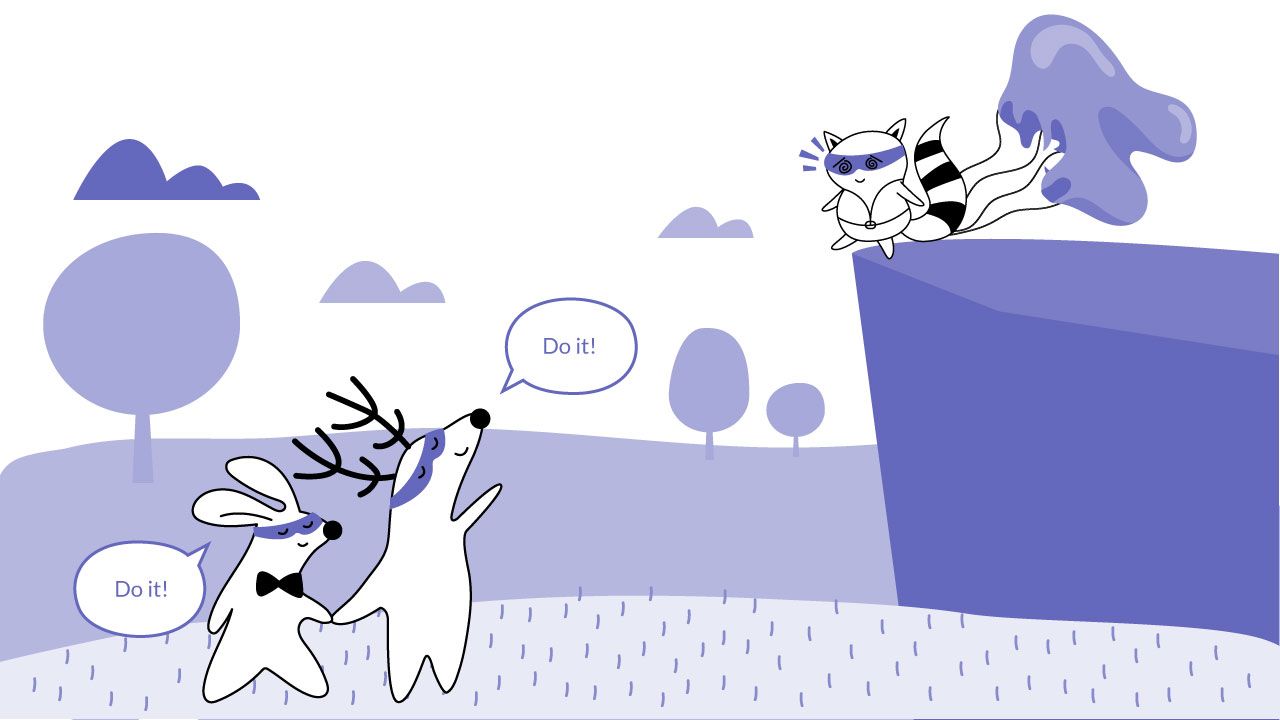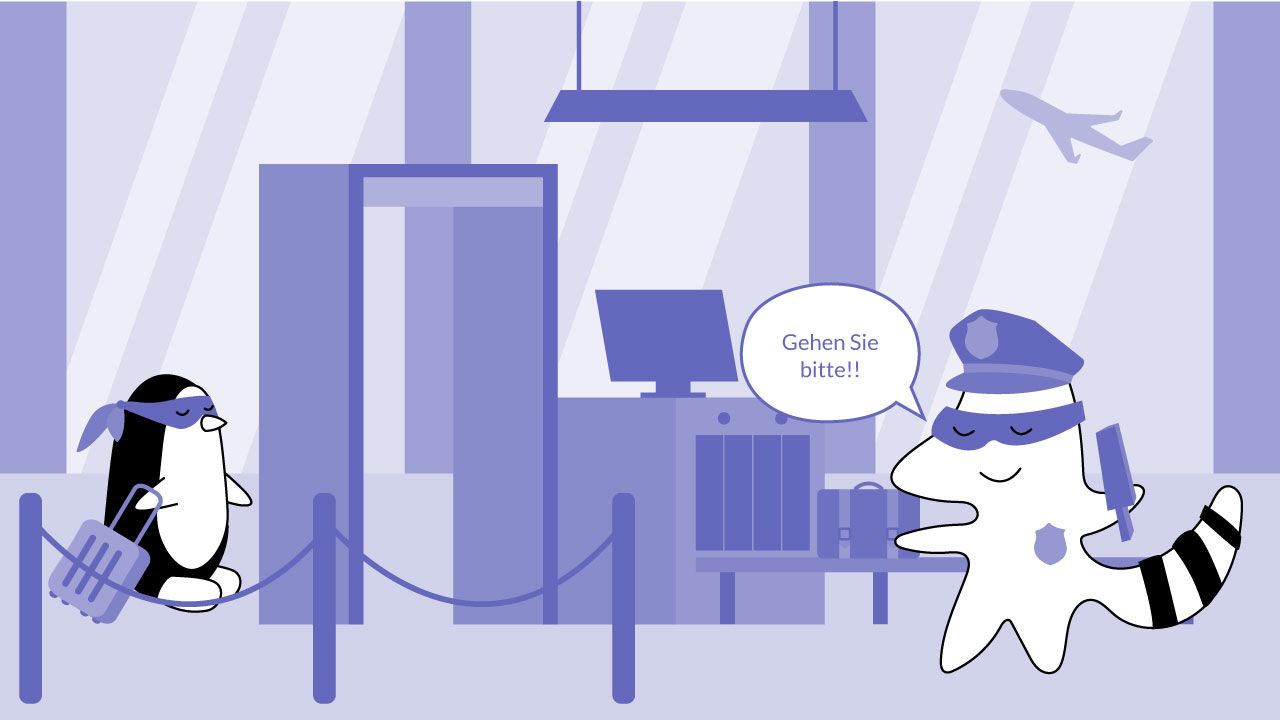
Take a moment to think - Have you ever realized how frequently you use the imperative form to communicate with others throughout the day? When you think of imperative, you might think of giving orders or commanding, but there are a lot of other everyday situations that call for this present tense form.
Every day, we give people advice or make them aware of something. You use the imperative form when you tell someone on the street to "Watch out!" to avoid an accident or say "Go for it!" to encourage a friend. You also need it a lot when giving instructions.
Furthermore, the imperative is considered elevated language and it is very useful in formal contexts. As a result, when you’re learning German, the imperative form should be on the list of the basic things to master - in case of situations like the ones we just mentioned while in Germany.
The imperative is also frequently used in written German, such as in advertisements and flyers, so knowing it will be especially beneficial for your reading and comprehension skills. Read in - and learn how to create the perfect imperative sentences.
Learn German with Langster
How Does the German Imperative Form Work?
To begin with, you can use the imperative form in the second person singular and plural (including the formal “you”), as well as the firs person plural. Let us show you the imperative in English first, so you know what it's used for. Consider the following scenarios:
You want to bungee jump and are hesitating before jumping. People support you by chanting: "Do it! Do it!"

The people are chanting "Do it!" use the imperative form of the verb "to do," which is in the standard present tense form. Now, look at the same example in plural:
You and your friend want to bungee jump, and you both hesitate to jump. People support you both by cheering: "Do it!"
The first thing you notice is that it looks exactly like the present tense. The second thing is that there is no difference between the imperative form in singular and plural. The exclamation mark is often used to emphasize the imperative in English.
On the other hand, in the German language, it is much easier to identify the imperative in a sentence. There are also distinctions between the imperative forms for singular and plural.
How Do You Form the German Imperative?
To form the imperative in German, you need to use the verb in its imperative form and the correct pronoun: Sie for the second person plural (formal "You", or Sie form - we'll get to that later), and wir for the first person plural (us). The second person singular (you, or du form) requires only the verb, without a subject pronoun.
Here, it is essential to know the verb's root. For some verbs, such as regular or weak verbs, this is easy to figure out, but of course, there are always exceptions where you might need some more practice. For the regular verbs, you usually just erase the suffix -en.
Look at the following verbs:
- kochen -> koch (cook)
- stoppen -> stopp (stop)
Try to choose the right root:
Quiz
1/2
lachen (to laugh)
0
correct answers.
The Difference Between German Imperative in Singular and Plural
In the case of the situation we mentioned above ("do it!”), Germans would most likely scream "Spring!" (jump!) which derives from the German verb "springen." In the case of the plural example, they would yell "Springt!"
As you can see, the imperative verb ends on the verb's root and there is a small difference between the German imperative singular and plural forms. For the second person plural, the imperative verb "Spring" gets a -t and transforms into "Springt."

Small Grammar Digression: The Root of the Verb
To get a better understanding of what a verb's root is and how the imperative is built in the German language, here is an example - the conjugation of the verb "springen" in the present tense. When we conjugate the verb, it looks like this:
| ich springe (I jump) | wir springen (we jump) |
| du springst (you jump) | ihr springt (you jump) |
| er/sie/es springt (he/she/it jumps) | sie springen (they jump) |
| ich springe (I jump) | wir springen (we jump) |
| du springst (you jump) | ihr springt (you jump) |
| er/sie/es springt (he/she/it jumps) | sie springen (they jump) |
You can see that the ending of the verb changes, but the verb stem "spring-" stays throughout all conjugations. To build the German imperative for the second person singular, that root is all you need. For the second person plural, you can add a -t to the verb's root. Here are some more examples:
| verb in the infinitive | imperative second person singular | imperative second person plural |
|---|---|---|
| machen (to do) | Mach! | Macht! |
| schwimmen (to swim) | Schwimm! | Schwimmt! |
| gucken (to watch) | Guck! | Guckt! |
| verb in the infinitive | imperative second person singular | imperative second person plural |
|---|---|---|
| machen (to do) | Mach! | Macht! |
| schwimmen (to swim) | Schwimm! | Schwimmt! |
| gucken (to watch) | Guck! | Guckt! |
Imperative With the Formal “You”
You might not give commands or orders to people you don't know, but you still need to use the imperative to give advice or suggestions to strangers. The formal imperative is not complicated - you just use the infinitive form and add the formal pronoun "Sie" afterward.
It can also be a polite form to ask people to do something. In that case, don't forget to add the word "bitte" (please). Here’s the example with the formal imperative:
- machen (to do) - Machen Sie (bitte)! (Do it please)
- schwimmen (to swim) - Schwimmen Sie (bitte)! (Swim please!)
- gucken (to watch) - Gucken Sie (bitte)! (Watch please!)

Imperative with Irregular Verbs
A very good thing about the German imperative is that you don't have to worry about irregular verbs. In our previous post, we showed you that there are several verbs in German called "strong verbs" or "irregular verbs," which change their root in some present tense conjugations. One example is the verb "fahren" (to drive):
| ich fahre (I drive) | wir fahren (we drive) |
| du fährst (you drive) | ihr fahrt (you drive) |
| er/sie/es fährt (he/she/it drives) | sie fahren (they drive) |
| ich fahre (I drive) | wir fahren (we drive) |
| du fährst (you drive) | ihr fahrt (you drive) |
| er/sie/es fährt (he/she/it drives) | sie fahren (they drive) |
You see that the verb's root "fahr-" has a vowel change in the second and third-person singular. To build the imperative of "fahren" you don't have to consider those changes as you can just look at the infinitive "fahren," and take the suffix -en off.
The rest of the verb forms the imperative, so for the singular, it would be "Fahr!" and for the plural, it would be "Fahrt!"
Irregular Imperative Forms
Even though most of the irregular verbs do not cause any problems when building their imperative, there are always some exceptions. In the imperative case, there are irregular verbs with a vowel change from e to i in the second and third person singular. Look at the following conjugations:
- geben (to give) - ich gebe, du gibst, er/sie/es gibt, wir geben, ihr gebt, sie geben
- essen (to eat) - ich esse, du isst, er/sie/es isst, wir essen, ihr esst, sie essen
You can see that, like the verb "fahren," the two verbs change their vowel in the second and third person singular. Instead of the vowel changing to an Umlaut (such as "ä"), they just change the vowel e to i.
Verbs that have this change from e to i keep the i in their imperative form. For the verb "geben," the singular imperative form would be "Gib!" and not "Geb!" For the second person plural, it would be "Gebt!" which follows the regular rule.

A Few Phrases with Imperative
Let us introduce you to some common German phrases with imperative, which you can use in your daily life to practice. The imperative sentence does not use a personal pronoun before the verb as you address people directly by using the imperative.
Check if you can already find the irregular conjugation in the examples:
| English | German Imperative Singular | German Imperative Plural | German Verb in Infinitive |
|---|---|---|---|
| Give me the book! | Gib mir das Buch! | Gebt mir das Buch! | geben |
| Call me! | Ruf mich an! | Ruft mich an! | anrufen |
| Do not eat the seeds! | Iss nicht die Kerne! | Esst nicht die Kerne! | essen |
| Be quiet! | Sei ruhig! | Seid ruhig! | sein |
| Do it! | Mach das! | Macht das! | machen |
| Listen! | Hör zu! | Hört zu! | zuhören |
| Let's go! | Lass uns gehen! | Lasst uns gehen! | lassen |
| Don't be angry! | Sei nicht sauer! | Seid nicht sauer! | sein |
| English | German Imperative Singular | German Imperative Plural | German Verb in Infinitive |
|---|---|---|---|
| Give me the book! | Gib mir das Buch! | Gebt mir das Buch! | geben |
| Call me! | Ruf mich an! | Ruft mich an! | anrufen |
| Do not eat the seeds! | Iss nicht die Kerne! | Esst nicht die Kerne! | essen |
| Be quiet! | Sei ruhig! | Seid ruhig! | sein |
| Do it! | Mach das! | Macht das! | machen |
| Listen! | Hör zu! | Hört zu! | zuhören |
| Let's go! | Lass uns gehen! | Lasst uns gehen! | lassen |
| Don't be angry! | Sei nicht sauer! | Seid nicht sauer! | sein |
Remember that the verb form for the formal imperative is equal to the infinitive. So the last example would be "Seien Sie nicht sauer!" Apart from the formal imperative, remember that you don't use the pronoun with the imperative verb.
What Did You Learn Today?
We hope that we were able to demonstrate that the imperative is an important mood that can be used in a variety of contexts.
Remember that the imperative form is still used for giving commands and may sound a bit rude in the wrong context, especially when used with the second person singular in colloquial speech. You can always add the word "bitte" (please) to be more polite.
We hope that you will be able to use some of our examples or create your own imperative phrases soon. You can use the Langster app to practice German grammar and vocabulary more and make new steps on the road to fluency. Good luck!








